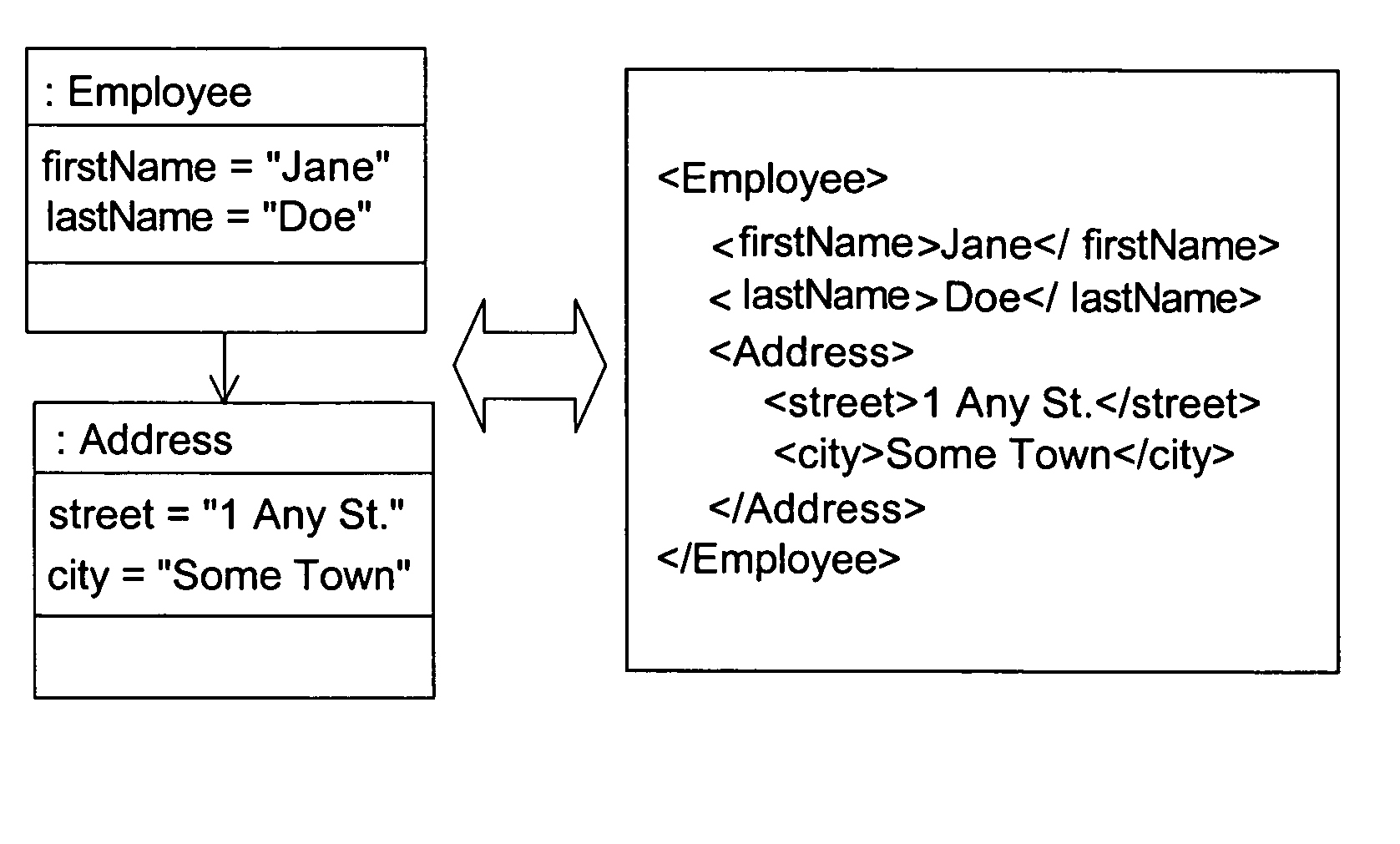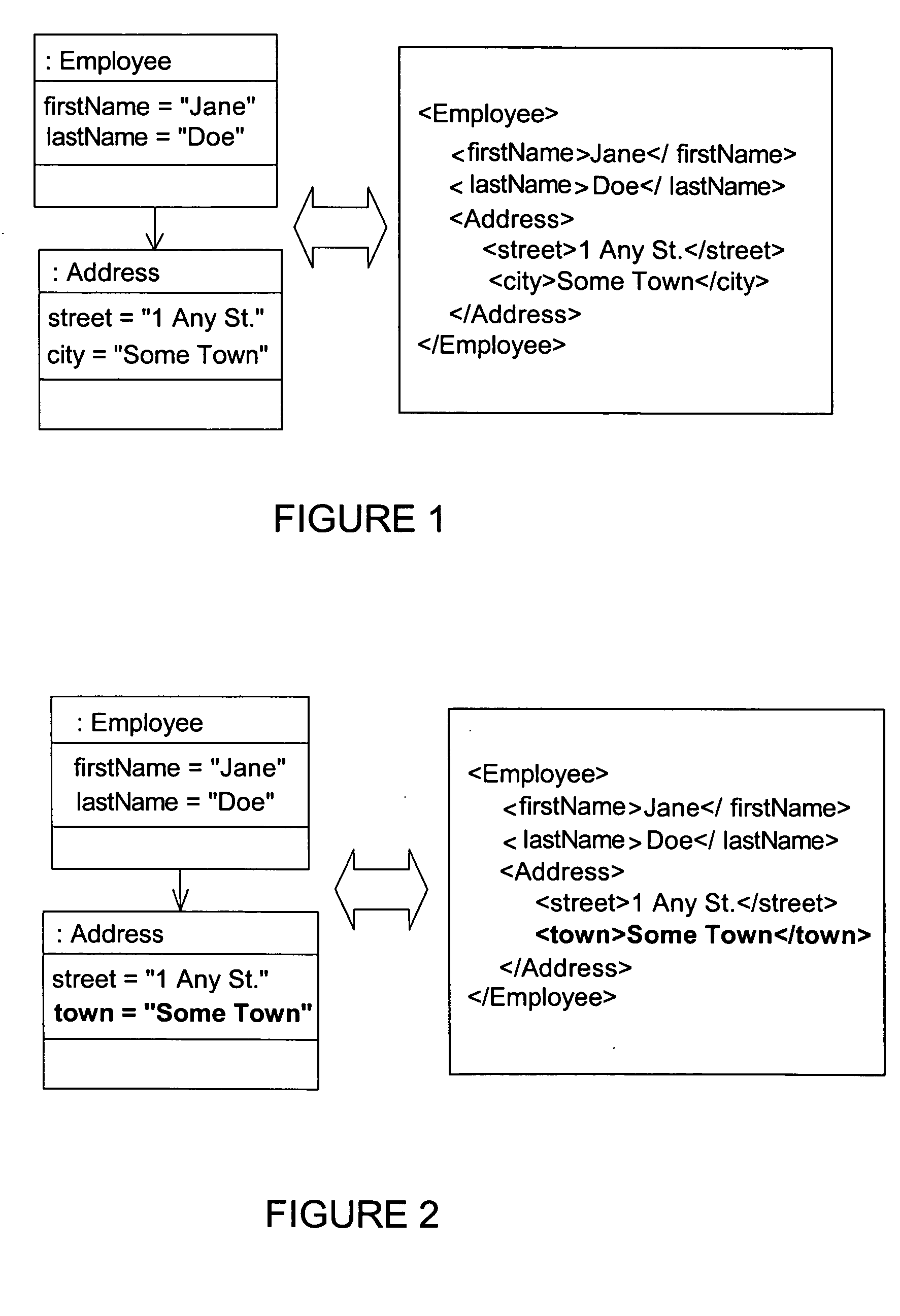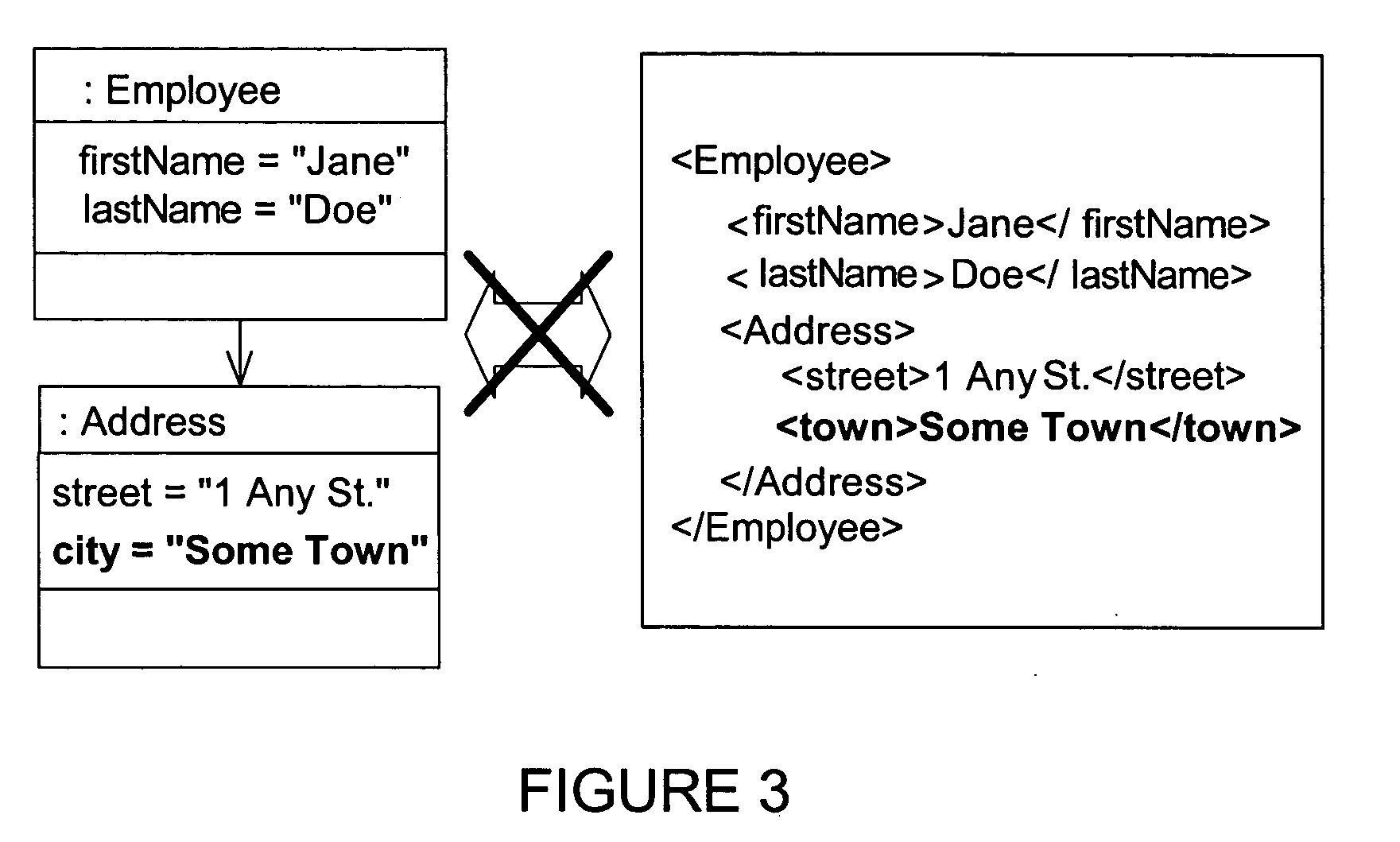Method of and system for providing positional based object to XML mapping
a positional based object and mapping technology, applied in the field of providing positional based objects to xml mapping, can solve the problems of not being able to adapt to the xml schema of the arriving document, the inability to convert software objects, and the inability to adapt to the xml schema
- Summary
- Abstract
- Description
- Claims
- Application Information
AI Technical Summary
Problems solved by technology
Method used
Image
Examples
example 3
General Mapping
[0103] In the background above, with respect to Examples 1 and 2, the following XML system was given:
Jane Doe 123 Any Street Some Town Ontario A1B 2C3 456 Another Road Some City Ontario D4E 5F6
where the first occurrence of the “NAME” element refers to the given name of the customer, while the second occurrence refers to the family name. Similarly, the first occurrence of “ADDRESS” represents the customer's billing address, and the second occurrence of “ADDRESS” represents the customer's shipping address. Hence, the metadata for these elements will reflect these intentions.
[0104] Note that a mapping has been generated for each software Object, and that each mapping includes: a mapping type which determines whether the XML element is intended to contain data or define structure, an Object attribute and an XPath which locates the destination in the XML document. The “address mapping” element is a complex element (i.e. it defines st...
example 4
Simple Values—XML to Object Conversion
[0117] In the example below the first occurrence of “NAME” represents the customer's first name, and the second occurrence of “NAME” represents the customer's last name. This will be realized in the metadata as follows: [0118] firstName Mapping Mapping Type: direct mapping Object Attribute: firstName XPath: NAME[1] / text( ) [0119] lastName Mapping Mapping Type: direct mapping Object Attribute: lastName XPath: NAME[2] / text( )
[0120] When an XML document is being converted to object data each of the mappings is processed for each of the objects mapped attributes. The XPath statement used to specify the location of the XML data is executed and the resulting XML data is passed to the mapping to be converted to object data, which is set on the object. Thus, the input XML code:
Jane Doe
will be converted to: [0121] Customer (firstName=“Jane”, lastName=“Doe”)
example 5
Simple Values—Object to XML Conversion
[0122] The complement to Example 4, is the conversion from Object format to XML. This would proceed along the following lines, the Object source: [0123] Customer (firstName=“Jane”, lastName=“Doe”)
[0124] being converted to:
Jane Doe
This occurs because the node metadata dictated that the firstName and lastName Objects should map onto XML elements with the same name, where the first name takes a position ahead of the second.
PUM
 Login to View More
Login to View More Abstract
Description
Claims
Application Information
 Login to View More
Login to View More - R&D
- Intellectual Property
- Life Sciences
- Materials
- Tech Scout
- Unparalleled Data Quality
- Higher Quality Content
- 60% Fewer Hallucinations
Browse by: Latest US Patents, China's latest patents, Technical Efficacy Thesaurus, Application Domain, Technology Topic, Popular Technical Reports.
© 2025 PatSnap. All rights reserved.Legal|Privacy policy|Modern Slavery Act Transparency Statement|Sitemap|About US| Contact US: help@patsnap.com



